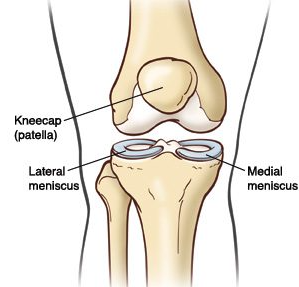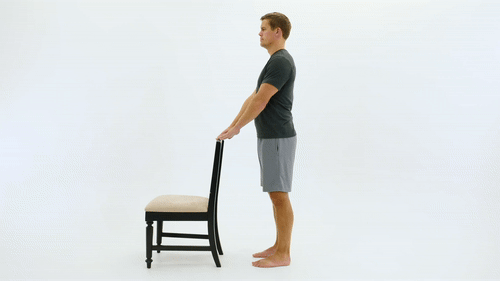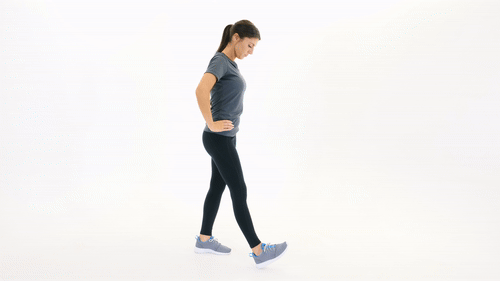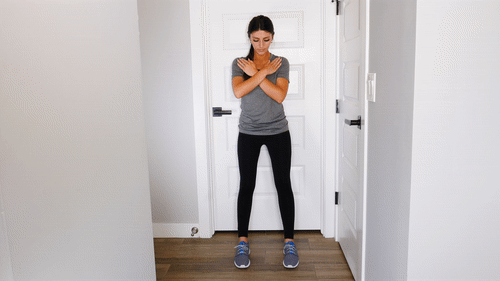Meniscal Tears Recovery Time: Key Facts, 6 Best Exercises for Optimal Recovery
Being diagnosed with a meniscal injury can come with its own breed of uncertainties. Chances are you’ve already been confronted with these questions:
Will I ever get back to normal?
What does a meniscal tear recovery time look like?
What exercises can I do to help optimize my recovery?
The good news is meniscal tears come with a good chance of meaningful recovery. According to recent estimates, meniscal injuries constitute up to 20% of all sports injuries, and most affected people recover most of their physical abilities with the right treatment.
This article will take you through a closer look at what meniscal tears are all about, what treatment and recovery time lines look like, and some of the best exercises you can use to optimize your recovery process.
So What Exactly Are Meniscal Tears?
Your Menisci are tough, crescent-shaped structures situated on the inner and outer parts of the knee joint. More specifically, on the top surface of the Tibia(Shin Bone).
Their main function is to protect the knee joint by absorbing shock. In other words, they help with dissipating and reducing forces through the knee joint, effectively preventing damage to associated bones and other structures. They also play a key role in stabilizing the knee joint and providing lubrication.
Menisci get their incredible structural strength from a complex network of tough fibers(Collagen Fibers) arranged in superficial and deep layers. However, just like any structure in the human body, they aren't invincible. Too much force can cause breaks or tears in these fibers at varying degrees depending on the nature of the impact.
Causes
Meniscal Tears are commonly caused by excessive torsion/twisting forces between the thigh bone(Femur) and the Shin Bone(Tibia). The biggest culprit is when the thigh bone overly twists, or moves forwards or backwards relative to the top surface of the shin bone.
Meniscal Tears aren't always a result of trauma. Sometimes, they can be part of the general degenerative process in Knee Osteoarthritis, which is common in the aging population and athletes with previous injuries.
Why Some Meniscal Tears Prove Difficult to Heal
Meniscal blood supply isn't as impressive as their structural resilience. A closer look shows that most of the blood vessels responsible for supplying blood to the menisci are situated in the outer parts, known as the red zone. The inner two-thirds have little to no blood supply. Consequently, tears in these areas can be difficult to heal naturally. There are many types of Meniscal Tears based on the pattern/nature of the lesion/tear.
Management Options and Typical Recovery Time for Meniscal Tears
There are two main treatment approaches to Meniscal Tears. The choice mostly depends on the nature and location of the tear within the meniscus.
Conservative Treatment
Conservative treatment involves the use of non-invasive procedures to enhance healing and recovery. This is a typical choice of treatment in small, incomplete tears in well-nourished parts of the meniscus(outer zone). Physiotherapy is a huge part of conservative management in these cases, aiming to optimize healing and restore physical function.
This is possible through a number of treatment approaches and techniques, including:
R.I.CE: Rest, Ice, Compression, and Elevation.
Strengthening Exercises: To restore and improve muscle control and joint mechanics.
Flexibility Training: Restore joint range of motion and improve soft tissue properties.
Manual Therapy: Hands-on techniques aimed at improving joint mobility and reducing associated symptoms.
Surgery
Sometimes, surgery may be the only option for better short and long term outcomes. Based on the nature and type of tear, your surgeon will choose the most appropriate option from a wide range of procedures. Surgical procedures for meniscal tears are broadly categorized into two:
Meniscal Repair: Involves the use of sutures to repair torn parts of the meniscus.
Meniscectomy: Involves removal of a torn portion of the meniscus. Once it’s removed, meniscal transplantation may help with replacing the injured tissue to avoid Osteoarthritis and pain.
After Surgery
After the surgical procedure, you're typically required to use crutches for at least 3 weeks. Your Physiotherapist will take you through a comprehensive rehabilitation program between 3-4 months. If you're an athlete, it may take between 6-8 months after the procedure before you're back on the field. The exact amount of time varies between individuals due to a range of factors which need to be taken into consideration by the multidisciplinary team(surgeon and physio).
Need to talk to a physio? Reach out to us for a quick chat or consultation with one of our physios.
5 Best Exercises Meniscal Tears
Before we dive deep into the best exercises, note that this list isn't meant to replace your physio's plan. It’s rather a guide with suggestions you can factor into your treatment plan together with your therapist. Remember, treatment should always be highly individualized based on existing guidelines. Generally, this list is ideal for those undergoing conservative management, and have been cleared for a regular flexibility and strength training routine, or at an advanced rehab phase after surgical treatment.
1. Standing Quadricep Stretch
Aim
Prevent tightness and shortening of Quadriceps(muscles on the front portion of your thighs).
Improve or maintain knee flexion(bending).
Prevent tightening or shortening of other soft tissue structures around the knee joint.
How to do it
Stand behind a chair or a wall, feet at shoulder width apart.
Using the chair or wall for balance, bend the affected leg at the knee, and grab your foot at the back.
Gently pull the leg backwards until you feel a gentle stretch on the front portion of your thigh.
Hold for 15-20 seconds.
Return to the starting position.
Repeat the sequence for another rep.
2. Standing Hamstring stretch
Aim
Prevent or reduce tightness in the Hamstrings: muscles at the back portion of your thighs.
Improve Knee joint extension.
Improve or reduce tightness in other soft tissue structures around the knee joint.
How to Do it
Start with the affected leg forward, toes up, foot resting on the heel.
Hands should be resting on your pelvis/waist to keep a more compact, balanced shape.
Start leaning forward until a gentle stretch is felt behind your hips and knees.
Hold the stretch for 15-20 seconds.
Repeat for 2-3 reps.
3. Wall Squats
Aim
Build Strength in Quadricep Muscles
How to Do it
Stand tall, with your back leaning on the wall. Feet should be shoulder width apart.
Shift your feet a full step forward while keeping your back in contact with the wall.
Fold your arms across the chest, or just keep them by the sides.
With control, squat to knee level. Unlike the conventional squat, your back should slide against the wall for extra support.
Return to the starting position.
If you're experiencing discomfort, you can switch to the mini version. Instead of getting all the way to knee level, get down to around 50% before returning to complete the partial squat.
4. Standard Body Weight Squat
Once you've mastered the wall squat, progress to the standard bodyweight-only version:
Stand tall, feet placed shoulder width apart.
Unlike the Wall Squat, your feet should stay under your shoulders.
Lower your body to knee level, as if you're sitting back on a chair. Keep your back straight and avoid curling the back.
Return to the Starting position.
Repeat the sequence for 10-15 reps, 4 sets.
5. Romanian Deadlift
Aim
Build Strength in your Hamstrings and Glutes
How to do it
Hold a light Dumbbell in each hand and stand up tall.
Place your hands and Dumbbells just in front of your thighs, palms facing backwards.
Slightly bend your knees, brace and stiffen your legs up.
Chest should be slightly extended forward with your back solid and straight.
Lower the Dumbbells to ankle level, using your hips as hinges for upper body movement. Again, avoid curling your torso as you go down.
Return to the starting position.
Repeat the sequence for another rep.
6. Lunges
Aim
Improve balance and proprioception(joint position sense)
Build Quad Strength.
Improve Quad and Hamstring coordination.
How to do it
Stand up tall, feet at shoulder width
Take a long step forward with the affected leg.
On contact, lower your rear knee until your lead thigh is parallel to the floor.
Reverse to the starting position.
Repeat the sequence on the other side.
Aim for 10 reps for each leg, 2-4 sets for a start. Again, pay attention to your body's response. Try to go to a partial range(40-50%) of the movement once you notice marked pain or persistent discomfort.
Recovering from a torn meniscus can be an ordeal. But you don't have to navigate the journey alone. With the right expertise and guidance, you can safely reclaim a pain-free, productive life.
Book Now
Your recovery starts here. Get in touch with us today: give us a call, or fill out the form below. Our Physiotherapists with expertise and years of experience in managing menisci and other orthopedic injuries are ready to help and be part of your story.















